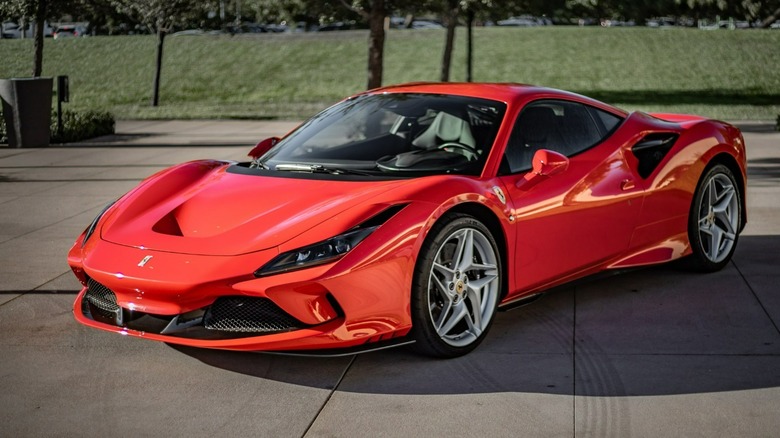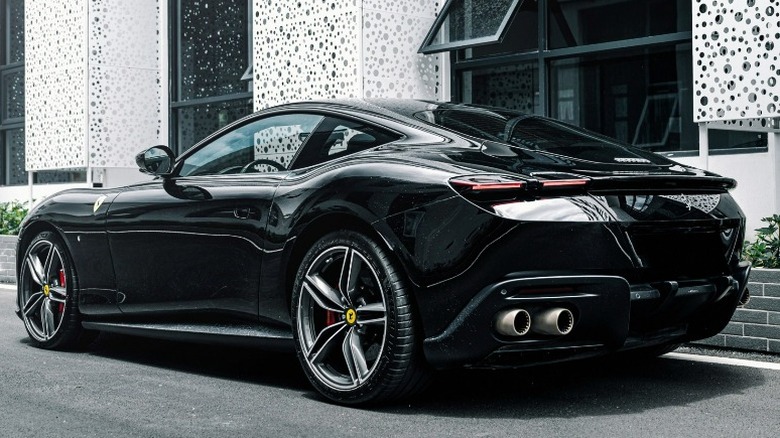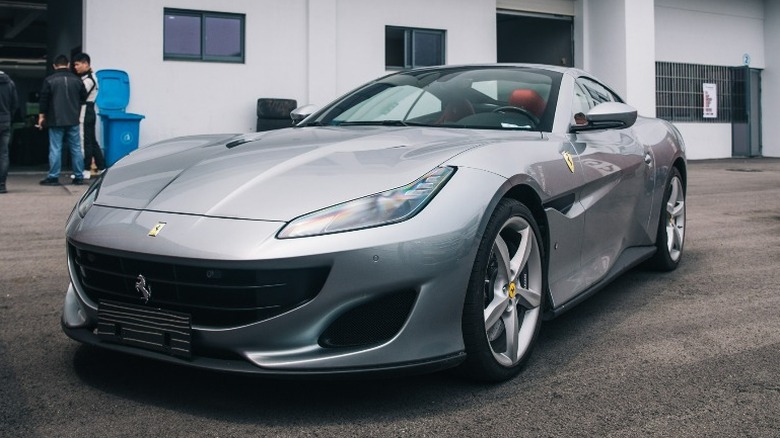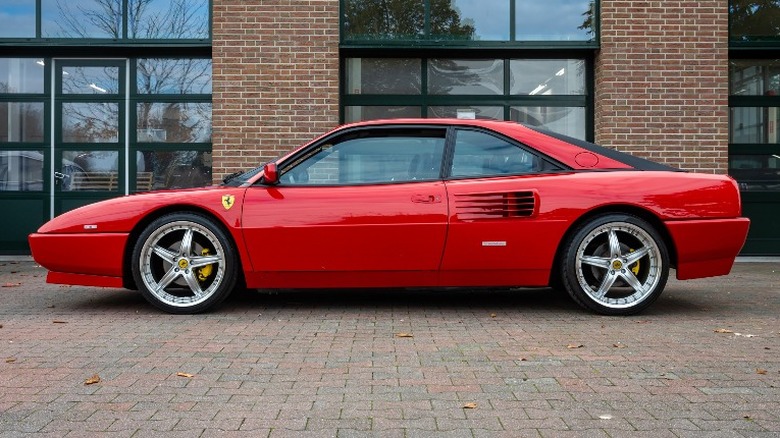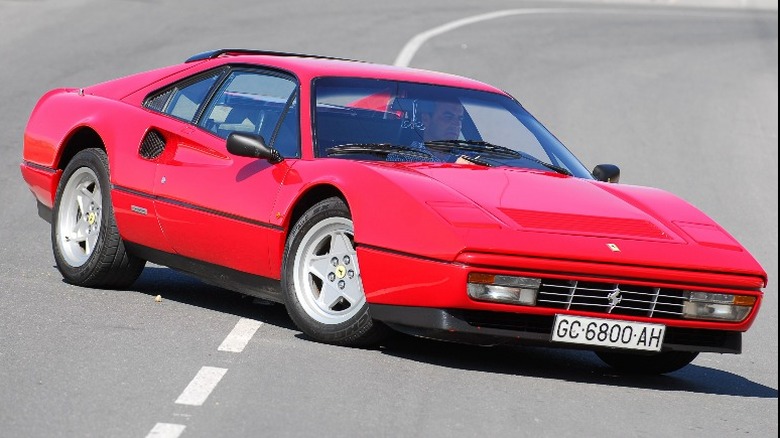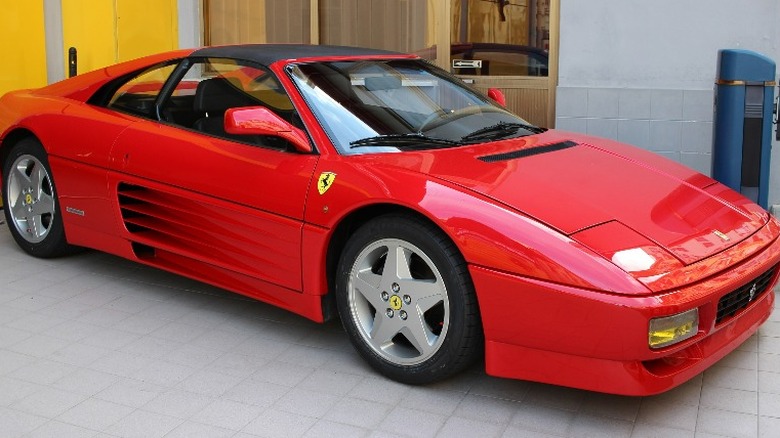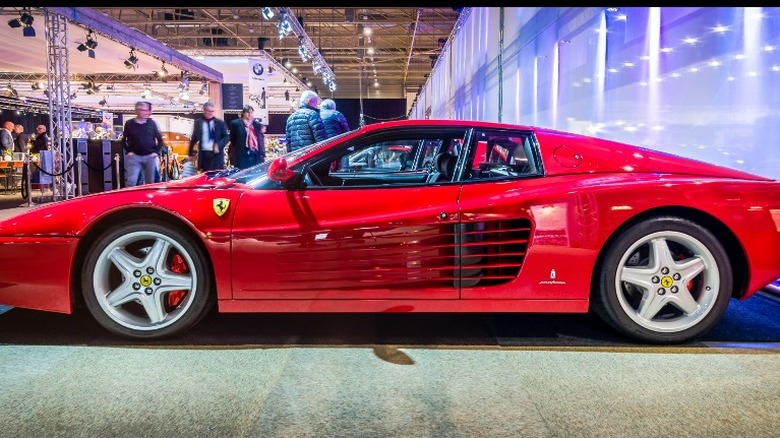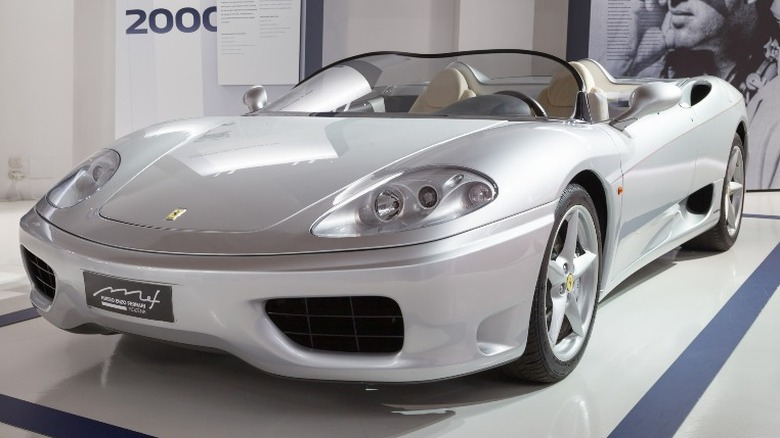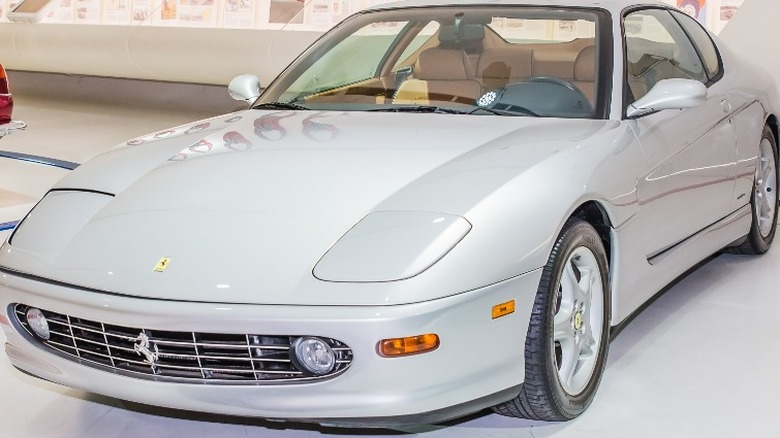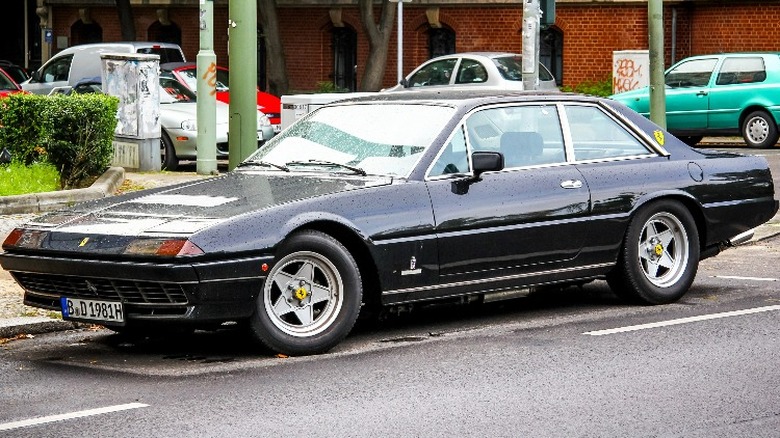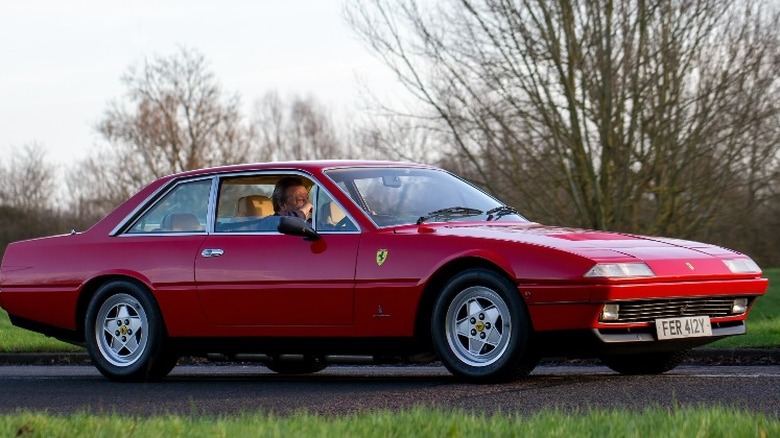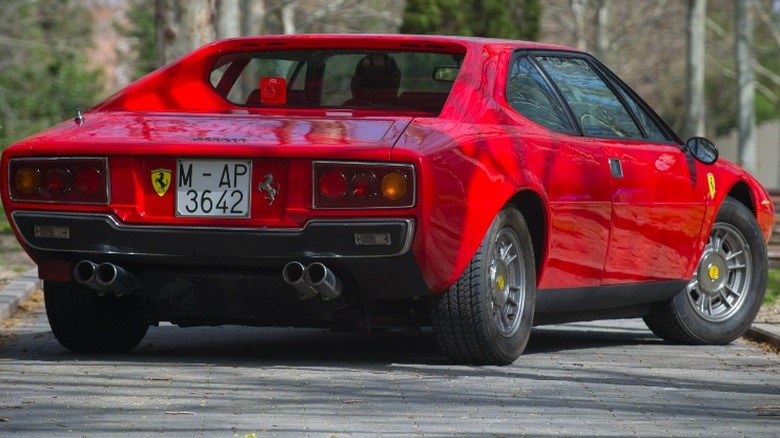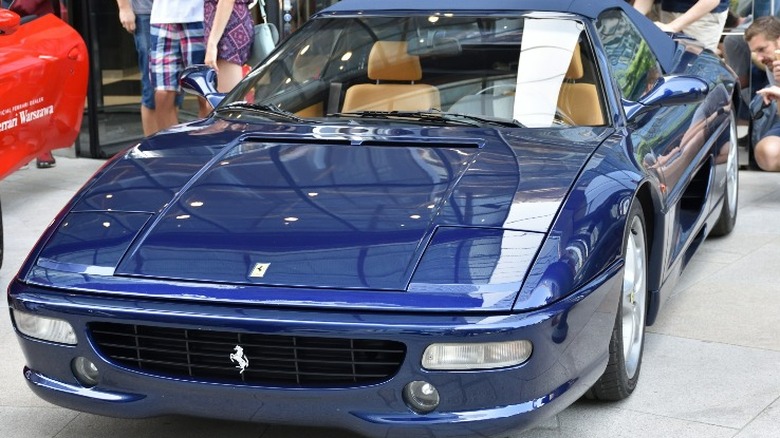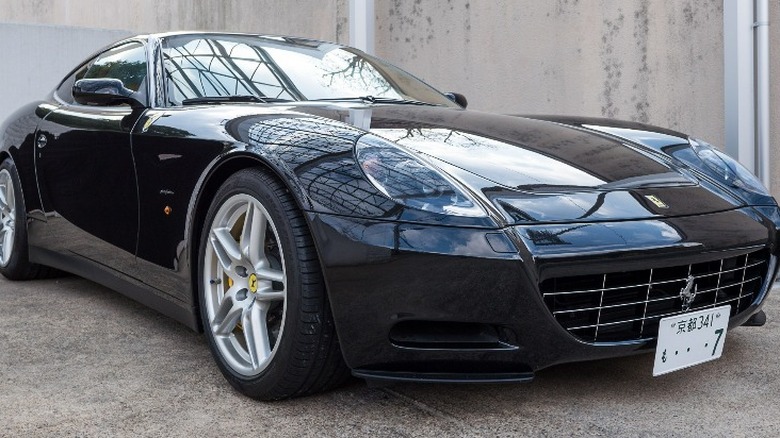The Cheapest Ferraris You Still Can't Buy
For many sports car enthusiasts, Ferrari ownership is a goal achieved. The exotic, Italian sports car boasts exceptional power, remarkable handling, and an elegant, smooth flowing, sculptured body that rivals most of its competitors. Ferrari designs its new luxurious high-performance vehicles for a limited segment of the buying public, typically affluent individuals who don't balk at the exorbitant sales prices nor do they object to the ongoing high maintenance costs.
The 2022 Ferrari lineup ranges from the Roma starting at $222,620 to the SF90 Spider with a base price of $570,000. Options can easily drive up the price of even the cheapest new Ferrari to a quarter of million dollars. For enthusiasts who long to own the high-performance Italian sports car, but spend a bit less money, a previously owned Ferrari might be the only option.
However, ownership doesn't come cheap even with a pre-owned Ferrari. While a restored classic model can cost a fortune, less popular models or those with long production runs are available at more reasonable prices. Still, the best bargains in used Ferraris sell in the range from $30,000 to $80,000. Furthermore, many of these lower-cost models are "maintenance nightmares" with replacement parts and labor prices that border the absurd. According to Motor and Wheels, an oil change on an older Ferrari typically costs about $1,000 and a major service check can run between $3,000 and $7,000.
Here are the cheapest Ferraris available — that may still be beyond your budget.
2022 Ferrari Roma
The 2022 Roma is perhaps one of the most beautiful machines Ferrari has ever produced. The grand touring car represents a return to the design philosophy of mid-twentieth-century cars like the 250 GT and the 275 GTB. While these were powerful road vehicles capable of handling the most challenging mountain curves, they were also stylish sports cars featuring simple but elegant lines and comfortable luxurious interiors. In recent years, performance has driven Ferrari design more than artistic appeal resulting in aerodynamic carrozzeria with shapes, vents, and spoilers intended to direct airflow at 180 miles per hour. The new SF90 Stradale and F8 Tributo are examples: high-performance machines that, while they are aesthetically pleasing, were created with a priority on engineering and performance.
Under the hood of the Roma sits a twin-turbocharged intercooled DOHC 32-valve V-8 with direct fuel injection and aluminum block and heads that generates 612 horsepower at 7,500 rpm and 561 lb.-ft. of torque at 3,000 rpm. The engine sends all that power to the rear wheels via an 8-speed dual-clutch automatic, helping it reach 60 mph in a blistering 3.1 seconds on its way to a top speed of 199 mph.
The 2022 Roma is the cheapest Ferrari currently in production, and while it may seem like a bargain compared to other new models (the 2022 Ferrari SF90 Stradale starts at $511,295) the GT coupe will still set you back $222,620 for the base model.
2022 Ferrari Portofino M
Portofino is arguably one of the most picturesque resort towns in the world. Located on the Mediterranean Sea near Genoa in Northern Italy, the former fishing village houses boutiques, art galleries, cafes, and restaurants on tiny streets next to a small harbor perpetually filled with multi-million-dollar yachts. So, it's only appropriate that Ferrari would name one of its stylish sports cars after a town that hosts the rich and famous and is a favorite among artists.
The Portofino M 2+2 grand touring cabriolet generates its characteristic exhaust note (even more audible with the open-top) from the front-mounted 3.9-liter twin-turbocharged and intercooled DOHC 32valve V-8 producing 612 horsepower and 561 lb.-ft. of torque. Shifting with the eight-speed dual-clutch gearbox, borrowed from the SF90 and Roma, is exceptionally fast (and even faster when engaging column-mounted carbon fiber paddle shifters). According to Car and Driver, the efficient drivetrain helps the Portofino M accelerate to 60 mph in the low three-second range and exceed a top speed of 199 mph. Well-tuned adaptive dampers and electrically assisted steering provide the driver with responsive feedback through the turns and carbon-ceramic brakes ensure the powerful GT will come to a stop quickly when needed.
Another model at the bottom of the current Ferrari lineup, the Portofino M may be one of the least expensive new supercars on today's market, but still requires the buyer to shell out at least $227,000.
Ferrari Mondial (1980 - 1994)
The Ferrari Mondial is a mid-engine, V8, grand tourer styled by Pininfarina and manufactured by Ferrari between 1980 and 1993. During its production, the Italian car builder offered the Mondial as either a 2+2 coupé with limited rear seating (best for small children), or a cabriolet. The Mondial marked two significant events in Ferrari history. When released in 1984, the cabriolet version Mondial was the first convertible since the Ferrari Daytona Spyder (1968 to 1973), and the grand tourer remains the last mid-engine V8, 2+2 Ferrari ever made.
The early Mondial models with a 214 horsepower 2.9-liter engine showed poor performance with various independent U.S. road tests reporting a 0-60 mph time of 8.2 to 10 seconds. However, the Mondial-t, released in 1989 with a redesigned powertrain, showed marked improvement both in performance and styling. The naturally aspirated 3.4-liter 32v quad-cam V8 generating 296 horsepower accelerates the Mondial-t to 62 mph in a respectable 6.3 seconds on its way to a maximum speed of 158 mph.
The Mondial was a commercial success for Ferrari, with over 6,000 units produced, but poor performance continues to impact resale values. The original 1980 Mondial 8 is often listed among the world's worst cars, due to its low power-to-weight ratio, and unreliable electronics. Furthermore, the glut of Mondial cars on the resale market has kept prices low but creates an opportunity for the buyer willing to spend between $30,000 and $60,000 for a Ferrari and pay for the high maintenance costs.
Ferrari 308 GTB/GTS (1975 to 1985)
Older Ferraris provide the best opportunity for the budget-minded enthusiast to own an exclusive piece of high-performance sports car history. According to Hemmings, while many vintage models have become collectors' prized possessions with prices well over $10 million, other Ferraris, such as the classic 308 GTB/GTS, made popular by the Magnum P.I. TV series, have not done so well, and typically sell on the resale market for around $55,000.
Ferrari manufactured the 308 from 1975 to 1985, offering the sports car in Berlinetta (GTB) and Targa or Spyder (GTS) forms, with the latter being more popular. The 308 features a transversely mounted naturally aspirated 2.9-liter quad-cam V8 engine that generates 240 horsepower (later upgraded to 252 horsepower) and a torque of 181 ft.-lb. The powerplant initially used Weber carburetors but upgraded to fuel injection in the early 1980s, and in 1982, a V8 with four valves per cylinder made its debut. Coupled to a synchromesh five-speed manual transmission, the powertrain accelerates the nimble 2,000-pound Ferrari to 60 mph in 6 seconds with a top speed of 158 mph (slow by today's standards, but not bad for a '70s car).
Ferrari built more than 12,000 308s in both body styles during the 10-year production run, compared to 6,000 Mondial cars built over 13 years. While the production number pales in comparison to a typical Fiat model run, the relatively high 308 manufacturing volume (for Ferrari) contributes to a loss of exclusivity, helping suppress the resale value.
Ferrari 348 (1989 to 1995)
When Ferrari introduced the 348 in 1989, the car met with mixed reviews. Its most ardent critics complained the styling with its side strakes and black grille over the taillights — borrowed from the Testarossa — needed updating. The seating positions were awkward, and the handling was poor enough to discourage anyone from putting the sports car through its paces on a curvy mountain road. However, after the disappointing early reviews, Ferrari evolved the 348 incorporating upgrades and innovations learned from Formula One Grand Prix development programs. In 1993, Ferrari launched the advanced 348GTB and GTS models alongside the 348 Spider.
A major departure from its successful road-going, mid-engine series of high-performance cars, Ferrari turned the V8 engine 90 degrees and mounted it longitudinally and low in the 348's pressed-steel monocoque chassis. The engine's position combined with a transversely mounted 5-speed manual gearbox resulted in a balanced and agile sports car. Top Speed test results show the naturally aspirated 3.4-liter 32v quad-cam V8 engine produced 316 bhp, accelerating the Italian sports car to 62 mph in an impressive 5.4 seconds. The powerful engine and improved aerodynamics gave the 348GTB a top speed of 173 mph.
Although Ferrari made significant improvements to the 348 during its production years, highlighted by the GTB and GTS releases in 1993, the stigma of worn-out styling and poor handling characteristics remains. Today, the resale value of both models lingers in the $40,000 range, making the 348 an attractive buy.
Ferrari Testarossa (1984-1996)
In 1984, when Ferrari introduced the Testarossa, with its angular styling and ultra-wide rear track, the sports car was a deviation from the smooth flowing lines that characterized the 512i Berlinetta Boxer it replaced. But perhaps the most distinguishing characteristic was the signature side intake strakes needed to channel air to the side-mounted radiators that reduced cockpit heat.
The original model, manufactured until 1991, boasted impressive performance specs with 385 bhp at 6,300 rpm and a torque of 361 lb.-ft producing an acceleration to 60 mph in 5.2 seconds. Critics called the Italian grand tourer the supercar of the '80s. However, the revised 512TR model launched in 1992 was even better. Ferrari updated the transmission, suspension, steering, and brakes while modifying the flat-12 engine with an upgraded ECU, new intake, larger intake valves, and lower-resistant exhaust system. The output improved to an impressive 428 horsepower and 362 lb.-ft. of torque, pushing the modified Testarossa to 60 mph in 4.8 seconds, reaching the quarter-mile in 12.8 seconds, and achieving a top speed of 195 mph. Not satisfied with straight-line performance only, Ferrari also repositioned the engine and five-speed manual transmission for a lower center of gravity and better handling.
Ferrari produced almost 10,000 Testarossa cars during its 12-year production run, making it one of the most mass-produced models in the company's history. Today, the exotic Italian supercar remains a desirable addition to any collector's fleet and resale prices for models in good condition often exceed $100,000.
Ferrari 360 Modena (2000 to 2004)
Named after its headquarters, Ferrari styled the 360 Modena using the design artists at Pininfarina, the same Italian car design firm and coachbuilder that created the 1975 Ferrari 308 series, 1984 Testarossa, and 1987 F40 carrozzerie. Available in a Berlinetta 2-door Coupe and Spider (2001), the curved lines, swept headlights, front air-intakes for cooling the brakes, and the classic Ferrari-styled round taillights of the Ferrari 360 screamed speed and excitement. Innovations included an all-aluminum space-frame chassis that made the vehicle about 130lbs lighter than its predecessor, the F355, and gave it 65 percent more torsional rigidity for improved handling. Exhaustive wind tunnel testing helped optimize aerodynamics, resulting in 400 pounds of downforce at 180 mph without a wing.
The naturally aspirated 3.6-liter V8 engine utilized titanium connecting rods and a flat-plane crankshaft to help generate 400 bhp and 400 ft.-lb. of torque. The engine mates to a six-speed manual or a six-speed Tiptronic automatic transmission. The lightweight 360's higher power to weight ratio improved the sports car's 0 to 100 km/h (62 mph) acceleration to 4.3 seconds — 0.3 seconds faster than the F355 — and the maximum speed to 189 mph.
During its brief production run of four years, Ferrari cranked out more than 16,000 model 360s. The abundance of 360 Modenas on the market has kept the price relatively low but the two-seater Berlinetta still fetches a price in the range from $70,000 to $90,000, while the convertible Spider often sells in the $130,000 range.
Ferrari 456 GT (1992 to 2003)
When Ferrari introduced the 456 GT in 1992 at an MSRP of $224,800, the grand touring car was considerably more expensive than its contemporary two-seat, 12-cylinder stablemates, the 1995 F512M at $189,500 and 1997 550 Maranello at $204,000. Only the ultra-limited production F50, at $487,000, cost more.
The 456 GT earned its exorbitant price as one of the best grand touring cars of its time. With a body designed by Pininfarina's Pietro Camardella, the 456GT performed excellently on the track. A reliable and comfortable ride with four seats and enough space for luggage on a long journey, the 456 GT featured an all-new V12 in the traditional front-mounted position coupled to a six-speed manual transaxle gearbox in a rear-wheel-drive layout to give the car perfect balance. Ferrari added an optional four-speed automatic later. The 5.5-liter engine produced 436 bhp and 406 lb.-ft. of torque capable of accelerating the ultra-luxury fastback to 60 mph in an impressive 5.1 seconds on its way to a top speed of 180 mph.
The 456 GT holds the distinction as the final project approved by Enzo Ferrari before he died in 1988, and the grand touring car is the only Ferrari in the 90s made with automatic transmission. Ferrari built only 3,289 456 GT cars over the 11-year production run and examples in pristine condition with low mileage list on today's market in the $200,000 range. However, you don't have to look too far to find models selling for $50,000 to $70,000.
Ferrari 400/400i (1976-1989)
The non-traditional 400i looks more like a sedan than a typical Ferrari sports car but the 2+2 boasts a Pininfarina-designed body with a back seat and a trunk. However, the iconic design provides an opportunity for the enthusiast to own a four-passenger Ferrari powered by a V12 engine at a reasonable price. Despite the massive V12 powerplant, the 400i performance is disappointing, but who needs blistering acceleration for a Sunday afternoon family outing?
The two-door coupé-bodied car with a front-mounted engine powers the rear wheels via a five-speed manual transmission. The 60-degree V12 layout with a Bosch K-Jetronic fuel injection develops 311 bhp at 6,400 rpm and a maximum torque of 304 lb.-ft. at 4,200 rpm. Ferrari claims the 400i accelerates from 0 to 60 mph in 6.9 seconds, covers the quarter-mile from rest in 14.8 seconds, and reaches a maximum speed of 152 mph.
While some Ferrari 400i models on the used market carry a price tag as high as $170,000, much cheaper models are available, typically in the $70,000 range. However, high maintenance costs are a certainty for the lower-priced 400i models, especially for those not well maintained. Malcolm McKay of Classic and Sports Car wrote, "Like the thoroughbred racehorse that is its logo, if you leave a Ferrari 'out to grass' or neglect its care for a period of time, you will have to lavish many, many hours getting it back into shape before it will win any races again."
Ferrari 412i (1985-1989)
A successor to the 400i, the angular lines and non-shapely body of the 412i made it one of the most unique looking classic Ferraris ever made. The high-performance car manufacturer made significant modifications to the 400 series when it introduced the 412 two-door coupes in 1985. A bump to the output over the 400i, the 412i's modified, naturally aspirated V12 engine produced 340 bhp at 6,000 rpm and a maximum torque of 332 lb.-ft. at 4,200 rpm. The Ferrari reached 62 mph (100 km/h) in 6.70 seconds and achieved a maximum top speed of 158 mph (255 km/h).
The front suspension featured independent, unequal-length wishbones and coil-over springs with telescopic shock absorbers. The rear suspension included twin coil springs over telescopic shock absorbers and independent, self-leveling, unequal-length wishbones. In addition to the power boost and suspension improvements, Ferrari made subtle styling changes inside and out. A deeper front spoiler that improved the car's aerodynamics and higher boot line was the most noteworthy visual change, while other modifications included new door and sill panels, modified alloy wheels with low-profile tires, light clusters, and a black windscreen.
Even though the 412i boasts a massive V12 engine, the body style borders on the banal compared to Ferrari's other exotic sportscars and most classic Ferrari enthusiasts steer clear of it. Despite its limited production of only 576 units, Ferrari 412i models are currently offered on the resale market in the range from $30,000 to $50,000.
Ferrari Dino 308 GT4
The Dino 308 GT4 may be the most controversial car in Ferrari's long history. Introduced at the Paris Motor Show in November 1973, the sports car bore Dino badges on the steering wheel, hood, rear panel, and wheels instead of the usual Ferrari "Prancing Horse." At the time, many prospective owners were hesitant to pay a supercar price for an automobile not badged "Ferrari." Today, some Ferrari purists still claim the Dino 308 GT4 is not really a Ferrari, even though Enzo named the sports car after his late son.
With its introduction, the GT4 marked two significant changes to Ferrari tradition. The four-passenger sports car was the first production Ferrari to implement a mid-engine V8 layout that became the predominant configuration in the succeeding decades. The car was also the first production Ferrari to use a Bertone-designed bodywork penned by Marcello Gandini instead of the traditional Pininfarina coachwork. The controversial Bertone styling featured sharp angular lines entirely different from its curvaceous Pininfarina-designed two-seater sibling, the Dino 246.
The naturally aspirated 2.9-liter 16v quad-cam V8 engine producing 251 bhp accelerates the Dino 308 GT4 to 62 mph in 6.4 seconds and on to a maximum speed of 155 mph. The mediocre performance of the 308 GT4 and a reputation for poor reliability have made it less desirable for collectors than other models. However, despite the bad press, the Ferrari Dino 308 GT4 still fetches an average price of over $56,000 on the used market.
Ferrari 355 F1 Spider (1995-1999)
While many enthusiasts consider the 355 F1 Spider as one of the most stylish models Ferrari has ever made, the soft-top that detracted from the overall appearance was a deterrent to sales when launched in 1995. Furthermore, major engine issues have plagued the Spider and high maintenance costs have contributed to its lack of popularity. The 355 F1 Spider exhibits excellent performance. The naturally aspirated 3.5-liter 40v quad-cam V8 engine generates 375 hp to accelerate the F355 Spider to 62 mph in nimble 4.7 seconds and achieves 183 mph at the top end.
Ongoing maintenance costs should be of concern to any prospective buyer. According to Merlin Auto Group, replacing the engine timing belt is mandatory every three years, costing a whopping $7,000 to $9,000, because it requires removing the engine, not a job for the average home garage mechanic. The 355 F1 Spider exhaust manifolds have a reputation for warping and cracking. Replacement often costs about $4,000. Maintenance is not limited to engine issues. While changing worn-out suspension parts is common to most vehicles, Ferrari fixes generally cost much more. When the F355's shock absorber actuators that regulate damping force fail, the replacement cost is about $1,000 each. Rear tires last about 7,000 miles and the fronts roughly 15,000. Replacement tires go for about $700 each.
However, for the buyer willing to tolerate (and pay for) some maintenance issues, the 355 F1 Spider, at an average price of just over $60,000, may be worth it.
Ferrari 612 Scaglietti (2004 to 2010)
Designed by Ken Okuyama at Pininfarina, the Ferrari 612 Scaglietti is a two-door 2+2 coupé with a front mid-engine that sends power via a six-speed manual or F1A Graziano automated manual transmission to the rear wheels. The Scaglietti's massive 5.7-liter V12 (shared with the 575 Superamerica) generates 540bhp and a torque of 434 lb.-ft. giving the grand tourer remarkable speed. The car accelerates from 0-100 km/h (62 mph) in four seconds, flat. The top speed exceeds 199 mph. While the Scaglietti is amazingly fast, Ferrari designed the exotic four-seat grand tourer emphasizing an optimum compromise between ride comfort and body control. A replacement for the smaller 456, the grand touring car's larger size provides space (and comfort) in the rear seats.
While many Ferrari designs give priority to handling over a smooth ride, according to Autocar, Scaglietti owners claim no Ferrari has ever been so easy-going, or comfortable just to jump into and drive. The rear-mounted gearbox shifts effortlessly, and while in the default "normal" mode, the double-wishbone suspension's adaptive damping absorbs bumps and potholes better than any previous Ferrari model. Autoweek says the gentle speed-sensitive steering not only helps the driver maintain control over Scaglietti at high speeds but makes the car drive gracefully at slow speeds. The rearward weight bias gives the car a real advantage during acceleration, maintaining traction even on treacherously wet roads.
Most of the Ferrari 612 Scaglietti models on the resale market sell for over $100,000 with some pushing $200,000.
